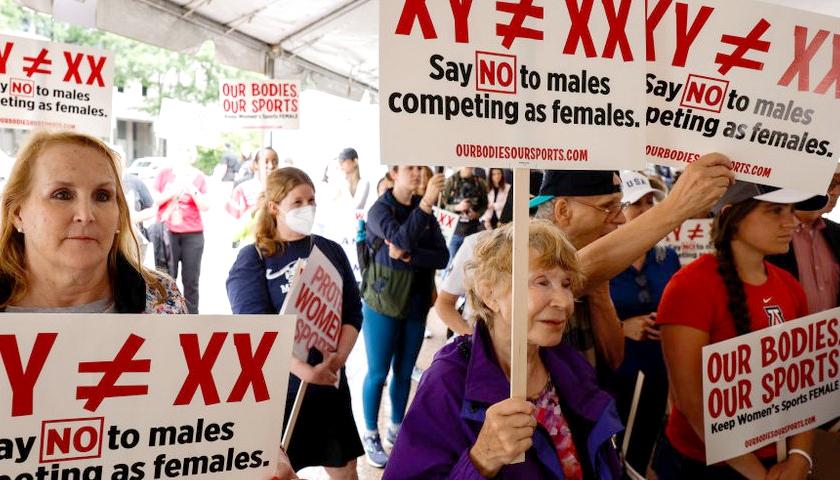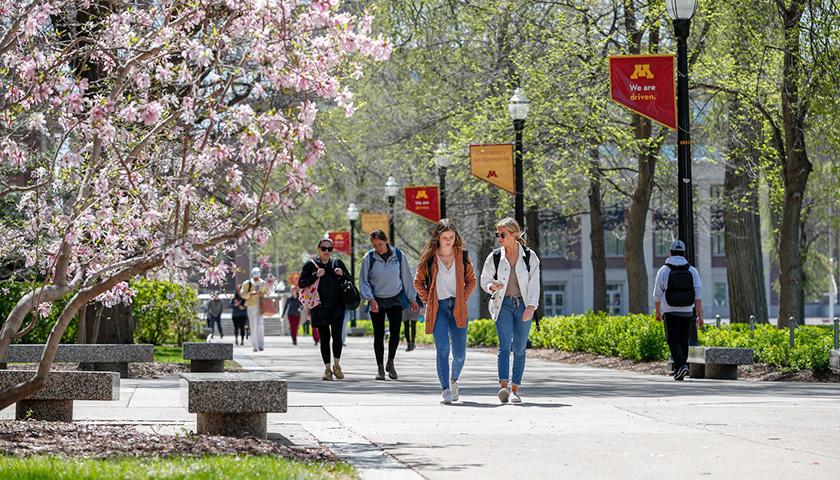by James Varney
Every day millions of parents put their children under the care of public school teachers, administrators, and support staff. Their trust, however, is frequently broken by predators in authority in what appears to be the largest ongoing sexual abuse scandal in our nation’s history.
Given the roughly 50 million students in U.S. K-12 schools each year, the number of students who have been victims of sexual misconduct by school employees is probably in the millions each decade, according to multiple studies. Such numbers would far exceed the high-profile abuse scandals that rocked the Roman Catholic Church and the Boy Scouts of America.
For a variety of reasons, ranging from embarrassment to eagerness to avoid liability, elected or appointed officials, along with unions or lobbying groups representing school employees, have fought to keep the truth hidden from the public.
“In any given year they have failed to report thousands of these situations, and instead they’ve papered them over, acted like it’s not an issue,” former Education Secretary Betsy DeVos told RealClearInvestigations. Stunned by a 2018 Chicago Tribune investigation that found 523 incident reports of sexual misconduct by employees of the city’s schools during the past decade, DeVos during the Trump administration launched the process of including specific questions about such cases in the Department’s Civil Rights Data Collection, a process it undertakes every two years. Previously, the Office for Civil Rights asked only general questions about sexual misconduct incidents, without a breakdown of alleged perpetrators.
The Biden administration initially sought to remove those questions, saying it wanted to avoid data duplication, but it backtracked after fierce criticism it was doing so as a sop to teachers unions. Consequently, the question will be included on future questionnaires, but, as of today, the Department of Education “has no data,” a spokesperson told RCI. These days, from Portland, Maine, to Portland, Oregon, even a cursory review of local news reporting brings disquieting revelations of teachers accused of or arrested for alleged sexual relations with a student. In just the past month:
- In California, multiple students filed a lawsuit against a male music teacher who had taught at three different schools in the San Jose area. The teacher is already serving prison time for previous convictions in sexual misconduct cases with students.
- In New Jersey, a female middle school teacher was arrested for an alleged ongoing sexual relationship with a student.
- In Texas, a male teacher was arrested for allegedly having a sexual affair with a 12-year-old student.
- In Illinois, a female substitute teacher faces charges of “grooming and predatory criminal sexual assault” for an alleged relationship with a sixth-grader.
- In Washington, the arrest of a male high school teacher on charges of sexual misconduct with a minor represented a repeat nightmare for a school district that previously had a psychologist convicted on the same charges.
- Just last weekend, a 36-year-old New Jersey teacher was arrested on multiple assault charges involving a sexual relationship with a teenage student.
These stories hold a lurid appeal to some. Sensational accounts of seductions of students by teachers, typically by high school female teachers, are tabloid catnip. The topic has provided material for standup comics, Hollywood writers, and pop tunes that didn’t begin or end with Van Halen’s 1984 hit “Hot For Teacher.”
But experts who track the problem don’t take the problem lightly. Pointing to research from Hofstra University that found roughly 1 in 10 students in K-12 schools have suffered “some form of sexual misconduct by an educator,” Terri Miller, head of the advocacy group SESAME (Stop Educator Sexual Abuse, Misconduct and Exploitation), said the number of victims is staggering.
“The rate of educator sexual misconduct is 10 times higher in one year’s time than in five decades of abuse by clergy,” Miller said, noting that in 2021 the U.S. Conference of Catholic Bishops reported it had received nearly 4,300 sexual abuse allegations. “Another striking contrast is we are not mandated to send our children to church; we are mandated to send them to school.”
The extent of the problem may shock many Americans. The topic has long been shrouded by a curtain held by various actors in the drama: schools reluctant to go public with embarrassing and possibly criminal activity, unions fighting for members’ privacy and sometimes state laws that protect it, and a government reluctant to ask hard questions that would gather reliable data.
But the cases and tactics often used to cover them up have become common enough to earn an ugly nickname: “passing the trash.”
“DOE does not and never has tracked sexual misconduct committed by adults against students,” said Billie-Jo Grant, a professor at California Poly State University who is one of the nation’s top researchers on the topic.
“DOE has never aggressively worked to stop teachers’ unions and administrators from passing the trash,” she told RCI. “DOE does not hold accountable the many enablers who have created a pool of mobile molesters in our schools nationwide. Your questions should include why? Why? Why?”
Grant and Miller attended a Department of Education conference on the topic in D.C. in October 2019, and it was out of that meeting that its Office for Civil Rights decided to ask more specific questions in its Civil Rights Data Collection, according to Miller.
And while the government may be groping toward more clarity, as a DOE official acknowledged having “no data” the Department would make public, he insisted the matter is viewed with concern.
In 2004, then-Hofstra professor Carol Shakeshaft did a report for the DOE that assessed the data available on the topic. From a handful of regional studies and media reports, Shakeshaft’s report found some broad parameters of the problem.
For example, while stories involving female teachers may be more titillating and gain more media attention, about two-thirds of the predators in schools are male. While no region seems to be immune from the problem, about half of the reported incidents occurred in southern states, Shakeshaft’s report found. Most of the victims are female (56%), and the majority of incidents involve high schools (62%).
The problem is not confined to public schools, although the public school student population dwarfs that of private and parochial schools. Incidents of sexual misconduct at tony schools like New York’s Horace Mann, or at St. George’s in Rhode Island are but two of the most publicized examples of the problem.
Protecting kids in school from inappropriate or criminal sexual activity involving employees and students would seem a surefire winner, but instead DeVos and her team found it was a political football. Union contracts and in many cases state law protect the privacy of employees. What that meant, DeVos explained, is that even if credible allegations of sexual misconduct were leveled against an employee, unless authorities were called in or an arrest made the alleged perpetrator was often free to leave one school and work in another.
The definitions of what constitutes sexual misconduct could be broadly construed, and the proliferation of social media has not only loosened the boundaries of contact between school employees and students, but provided more opportunities for wrongdoers.
Still, for the most severe conduct, the Trump administration finally introduced on the 2020-21 school year questionnaire specific questions regarding “a school staff member and rape or attempted rape.” Answers for the initial year were optional, as is common with new reporting requirements, and the DOE declined to make the results public. But, in any case, those figures would be hopelessly incomplete because of the widespread school closures that were part of the COVID response.
Even with the new questions, Miller wondered how clear the picture provided might be, because for now OCR is asking only about incidents that occurred on school grounds.
“That means incidents that happen in a car, or an apartment, or anywhere off-campus, won’t be included, and that’s where the majority of these attacks happen,” she said.
The same problem had confronted one of DeVos’ top lieutenants, Kimberly Richey, when she served as chief counsel to the school system in Oklahoma. Even in a deeply conservative state, Richey found few supporters when, surprised by how many complaints were reaching her desk, she approached lawmakers in Norman about changes.
“I met with resistance from the very beginning,” she said. “And I had complaints, 95 percent of the time coming from parents, about a school or a teacher, and when I contacted them the teacher would immediately resign, travel five miles to the next district and start working there.”
Several people who spoke with RCI said teachers unions’ contracts were a major obstacle to both moving forward with credible allegations of sexual misconduct and blocking future school employment for alleged perpetrators. Neither the American Federation of Teachers nor the National Education Association responded to questions from RCI about this topic.
Teachers aren’t the only obstacles to reform. While Superintendent of Public Education in Oklahoma from 2011-2015, Janet Barresi said, state groups lobbying on behalf of school administrators and board members were much more vociferous opponents than teachers unions of laws that would force schools to disclose information about prior allegations and cases involving school employees.
“If the system would be more open and honest about all this, then parents would feel more relieved and it would get rid of a great deal of rumor and conjecture,” Barresi said.
It is those employee protections that produce the pattern known as “passing the trash,” several experts told RCI. This is particularly relevant in cases where state or local law enforcement agencies are never notified of allegations. A school may launch an investigation after a parent or student files a complaint, but that investigation would cease when the employee resigned, and then state law or bargaining agreements often prohibit officials administrators from relaying such information to any new school where the alleged perpetrator applied or began working.
Miller said SESAME has model legislation states could pass to confront the problem, but thus far the group has found limited success.
The Enough Abuse Campaign, which did not respond to RCI’s questions, notes that age-of-consent laws and the definitions of what constitutes sexual misconduct have created a complicated legal and regulatory map. Still, the campaign seems more optimistic about legislative progress than SESAME, declaring that “over 75 percent of states have now passed legislation specifically outlawing educator sexual misconduct,” in recognition of the power imbalance that exists in a teacher/student relationship.
And there are some signs lawmakers are grasping the enormity of the issue.
On July 1, an Oklahoma law went into effect mandating any verbal or social media contact between school employees and students be done on platforms the school controls, which state Rep. Sherrie Conley called a “long overdue” regulation.
Similarly, in Michigan, state Rep. Brad Paquette, himself a teacher, has proposed legislation appointing a state ombudsman to deal with sexual misconduct complaints.
“It’s just a beginning but we have to start somewhere,” Paquette told RCI. “I first heard back in 2012 or 2013, when I started teaching, that I had to join the union because I might have an accusation filed against me. But I thought, ‘No, I should be fired if I did something wrong.’”
“I think we need to be engaged aggressively to root out the problem,” he said. “There’s no good reason for us to take a lax approach. You see these headlines all over the place and it’s unacceptable. People need to start asking questions.”
While Richey said she did not recall any credible allegations crossing her desk during a brief stint as an attorney with Virginia schools, Paquette’s “everywhere” assessment seems on the mark.
In Texas, for example, the online site Texas Scorecard started looking at the issue in 2022 after administrators in Prosper, a swanky Dallas suburb, attempted to cover up alleged repeated sexual offenses by a school bus driver. Since then, Texas Scorecard has kept an unofficial tally of such incidents, and the Lone Star State has had more than 100 cases every year since.
The Prosper superintendent is currently under investigation by Texas agencies, in part for the 2022 coverup, as Texas law requires officials to report any credible allegations of child abuse within 48 hours. In May, two Prosper high school coaches were arrested for allegedly covering up another sexual assault that involved students.
Separating student-on-student sexual misconduct is key to understanding how deep the problem may run with school employees, according to Grant and other experts. For example, in the more general questions DOE’s OCR would ask regarding improper incidents that fall under Title IX, troubling trends emerged. For 2015-2016, there were 9,649 incidents of sexual violence, and of that figure 394 cases were categorized as rape or attempted rape. In 2017-2018, those numbers skyrocketed, with overall incidents rising by 43% to 13,799 and the most serious category 74% to 685.
As alarming as that trend may be, there is no way of knowing how many of those cases involved school employees, and Richey suspects that, given how the questionnaire was traditionally perceived, the majority of them are student-on-student.
Nevertheless, Grant pointed to multiple studies that came to similar conclusions to that reached in the 2004 Hofstra report. That study found that 9.6% of the U.S. student body fall victim to educator sexual misconduct.
Looking at California data from 2010-2021, Grant of Cal-Poly found 2,497 “school employees disciplined, reprimanded or arrested for sexually abusing K-12 students.” Between 2012 and 2018, the DOE received 280 complaints of adult-on-student sexual harassment in Chicago Public Schools. A Texas study from 2008 to 2016 found 1,415 Lone Star State educators “sanctioned for sexual misconduct.”
These academic papers and sometimes salacious news accounts of teacher/student relationships do send up flares from time to time. In 2007, the Associated Press declared that “sexual misconduct plagues U.S. schools,” after its investigation “found more than 2,500 cases over five years in which educators were punished for actions from bizarre to sadistic.” In December 2023, Business Insider looked at the issue and concluded “shoddy investigations, quiet resignations, and a culture of secrecy have protected predators, not students.”
Last year, the Defense of Freedom Institute released a report titled “catching the trash” that concluded sexual misconduct by school employees has raged in the school system for decades.
“Various actors – school and district personnel, teacher unions, and the federal department charged with enforcing laws against sexual assault in public schools – bear responsibility for a systemic failure in preventing, and responding to, sexual assaults in public schools,” the report said.
Pointing to the Biden administration’s attempt to remove specific questions about the issue from the OCR questionnaire, report author Paul Zimmerman told RCI the public should not expect much daylight on the topic in the near future.
“The Biden administration has gone dark on this, they’re not interested in pressing this issue as evidenced by trying to discontinue the efforts made on this front by the previous administration,” he said.
These political bumps, and the wreckage the COVID shutdowns unleashed on education in America, means there is no way of tackling the problem’s dimensions, let alone the problem itself. “It takes so long to get these numbers that in the end they’re not that helpful,” he said.
The best way to block the passage of trash is through the SESAME Act, which DOE has cited as “model legislation” for states. To date, only a handful of states have passed the act, most recently Illinois in 2023. It requires the prohibition of non-disclosure agreements in personal or collectively bargained contracts, as well as deep background checks on all applicants.
Only such thorough steps will break what Amos Guiora, a law professor at the University of Utah who has worked with Miller and SESAME, calls “the complicity of silence.” While the parameters of the problem may be hard to find, Guiora said he was stunned when he recently published what he acknowledged is a niche book on a West Virginia teacher exposed years late as a pedophile murderer. The limited book sold out on Amazon and his podcast has now topped 1 million views.
“That tells you that what’s happening is something that is touching a chord,” he said. “It is so goddamn egregious what they have done to protect people who do this. Lawmakers will have to break the institutional complicity that surrounds this or they’ll just be protecting the perpetrators.”
– – –
James Varney is an author for Real Clear Wire.





